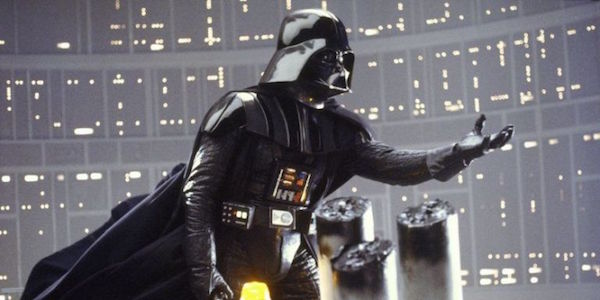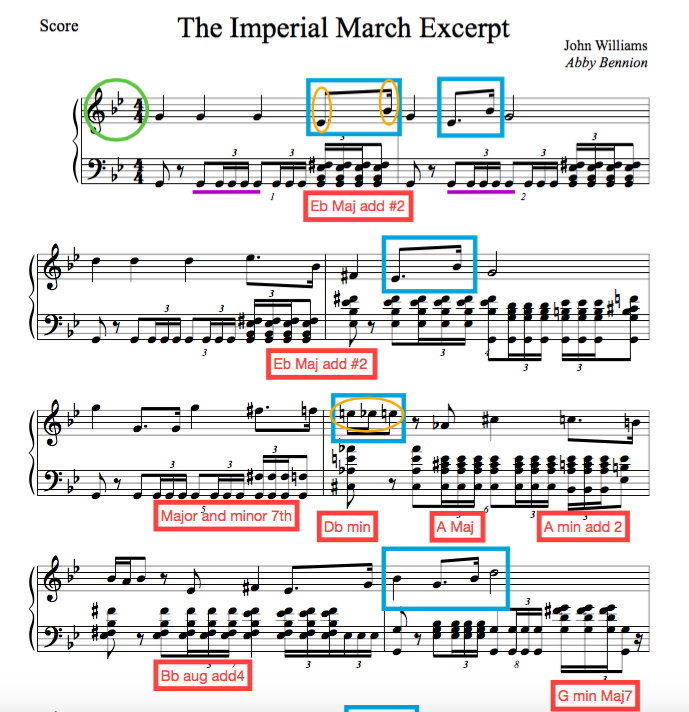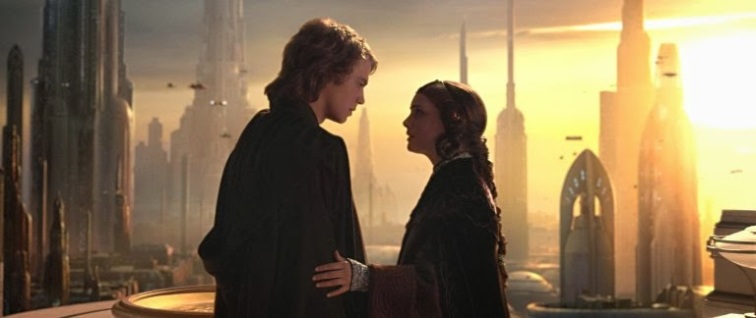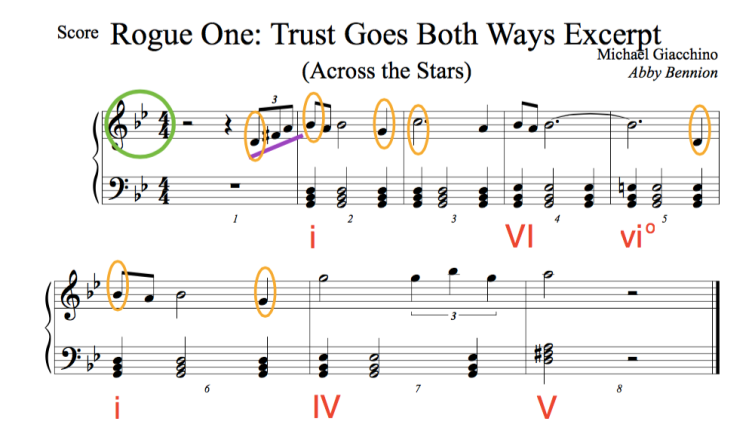Williams vs. Giacchino: variation on a Star Wars theme.
By Abby Bennion
Lets start here.
Rogue One, the most recent addition to the Star Wars series, is the movie that was made to connect the plots of the prequel Star Wars movies (I,II, and III) to the original trilogy (IV, V, VI) by building a plot line around the construction of the infamous Death Star and the origin of its structural flaw, and it. Was. Awesome. The movie used characters and a plot line unfamiliar to the rest of the Star Wars saga to bring what felt like 86% more importance to A New Hope. If you haven’t had the chance to see this movie, do so now. You won’t regret it.
While Rogue One is different from the other Star Wars movies in many ways, one of the biggest differences can be found in its soundtrack. John Williams, iconic composer of the film scores for Star Wars episodes one through seven, wasn’t commissioned to write the music for Rogue One. Commissioned at the last minute was Michael Giacchino, and he only had four weeks to compose the entire score.
First off – Giacchino’s style of composition is very different from Williams’s, (check out Giacchino’s soundtracks from Up, Ratatouille, and the latest Star Trek movies, as well some of Williams’s most famous works from Indiana Jones, Jurassic Park, or Harry Potter) but Giacchino manages to use the familiarity of Star Wars in his own style of composition. Ashley Hoffman from Time writes in her article “You Probably Won’t See Rogue One’s Biggest Change to Star Wars” about how Giacchino faced the challenge of catering to one of the largest fan bases in the world while composing for a new story. Giacchino wanted to use the iconic themes at the appropriate times to give the movie the Star Wars feel it required. My research looks at how Giacchino uses his variation on these themes to ensure the familiarity and nostalgia audiences crave from their favorite space series. The similarities between the themes and their Rogue One counterparts appear to be found not only in their melodies, but also within intervals, rhythms, keys, and chords.
My Research.
I transcribed the excerpts of three main themes in the Star Wars series; the Star Wars Main Theme, the Imperial March, and Across the Stars. I also transcribed the variations on these themes from three pieces on the Rogue One movie soundtrack – “When Has Become Now,” (0:00-0:16) containing a variation on the Imperial March, “Trust Goes Both Ways,” (0:19-0:40) a variation on Across the Stars, and “A Long Ride Ahead,” (3:26-3:36) the Rogue One tie to the Star Wars Main Theme.
After transcribing these excerpts, I compared their key areas, differences in intervals within each melody, rhythms, and each excerpts’ chord analysis.
Here’s what I found in somewhat music-science-y terms.. but don’t worry. I’ll explain things a bit more simply at the end.
Imperial March Theme

John Williams’s Imperial March theme is first heard in the key of G minor. Its Rogue One counterpart, however, is in the key of F minor (shown by the green circles.) As you can see by looking at the red text in the images of the excerpts, Williams’s chords are much more complex than Giacchino’s, but the same principles used in the original theme apply to its variant. Both Giacchino and Williams use larger intervals like sevenths, octaves, and sixths, as well as open chords against closer intervals such as seconds and chords with sevenths, and other added dissonances create similar contrasts. Interestingly, Giacchino begins his variation with an exact transposition of the original theme at measure 8. He then uses fifths and chromatic motion to relate back to Williams’s theme, as well as an augmentation of the transposed measure 8. Giacchino also uses Williams’s classic, rhythmic, triplet pattern (purple) to enhance his variation. The parts of the original theme used in the Rogue One theme is indicated by the blue boxes.


Across the Stars Theme

Williams’s Across the Stars theme is in D minor, and Giacchino’s is in G minor. These two themes are closest in key of them all. Both themes begin on the i chord of the key, but . again, Williams moves through a more complex chord progression while Giacchino keeps his simple. Giacchino takes the triplet rhythm used in Williams’s theme and puts it in his, and uses the minor sixth interval to begin his melody – just like the original. Measure 2 of the variation uses the same movement from scale degree 3 to scale degree 1 (a minor third) to scale degree 4 (a perfect fourth), but instead of continuing the original theme in its descending triplet, it remains on scale degree 4 and then repeats the beginning minor sixth and minor third intervals, then leaps to the octave and uses a super triplet over a IV chord to move to the dominant V chord creating a half cadence. Williams moves through a iv chord to a i chord, and then a major II leading into the dominant V chord.


Star Wars Main Theme

Here, Williams’s theme in the key of B-flat major and Giacchino’s variation is in D major. These two keys are the farthest apart in key out of the three themes and variations I analyzed. Williams moves through a I IV I IV I V chord progression, while Giacchino uses a I V7 I progression with a chord at the end that has the characteristics of a IV chord, but has additional 5 and 7 scale degrees, making the chord want to resolve to the dominant V by moving from the D to the C-sharp or maybe an E, but, instead, the chord remains unresolved. Measure 1 of the variation begins with the infamous fifth heard in measure 2 of the original theme, and then moves through the scale degrees 2, 3 and 4; a mirrored movement to the original theme which uses a triplet to move through scale degrees 4, 3 and 2. After the triplet, the original theme leaps to scale degree 1. In the variation, Giacchino keeps this same, familiar leap to the same scale degree, but moves through scale degrees 2 and 3 beforehand making the leap a minor sixth instead of a minor seventh like Williams’s theme.


My conclusions.
So how are these different? How are these the same? In each of the Rogue One variations, the same intervals and melodic contour as the original themes are used, but their keys are changed and Williams’s complex chord progressions are simplified. Giacchino’s themes were much shorter than the originals as well – giving the perfect amount of Star Wars familiarity to his score.
Michael Giacchino knew he would not be able to recreate a score by Williams, and that was not his goal. In an interview with Ashley Hoffman from Time he states, “‘I want to continue this world. This is a completely new story with characters we’ve never met before. They needed their own voice so it was important that the new aspects of the film and story get treated with respect, and the same intensity that they were in the past.'” Giacchino goes on to say that “‘there [are] moments in the film when it was the right thing to do'” about inserting the Williams material. However, he also states: ‘It’s really tricky because there’s a point when you’re just doing fan service. You don’t want to give the whole thing over just because something was done before you. It has to be right for the story. The second you start wandering outside of that mandate, you start doing things for the wrong reasons'” (Hoffman, Time).
Overall, Michael Giacchino appears to have successfully executed his intention: he kept reference to the original Star Wars saga and pleased hundreds of thousands of fans while composing a score unique to the new story. I was only able to analyze three of many themes I found in the score of Rogue One, and I look forward to finding more of these gems in Giacchino’s soundtrack and looking at how they relate to Williams’s.
Works Cited
Williams, John. Star Wars: the Empire Strikes Back : the Original Soundtrack from the Motion Picture. Los Angeles, Calif. :RSO Records, 1980.
Williams, John. Star Wars: Episode II, Attack of the Clones the Original Soundtrack from the Motion Picture. Beverly Hills, CA :20th Century Fox Home Entertainment, 2008.
Giacchino, Michael. Rogue One: a Star Wars Story: Original Motion Picture Soundtrack.
Hoffman, Ashley. ”You Probably Won’t See Rogue One’s Biggest Change to Star Wars.” Time, last modified December 14, 2016, http://time.com/4594729/rogue-one-composer-score/


